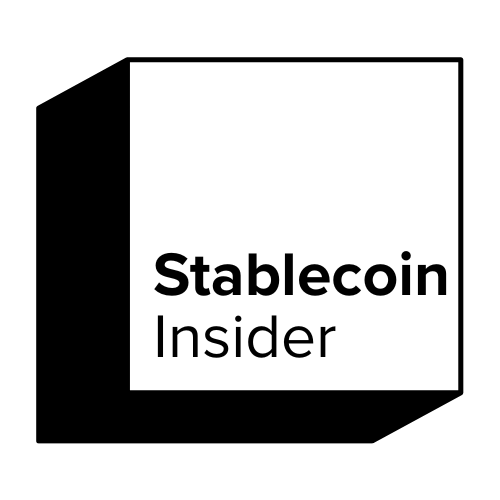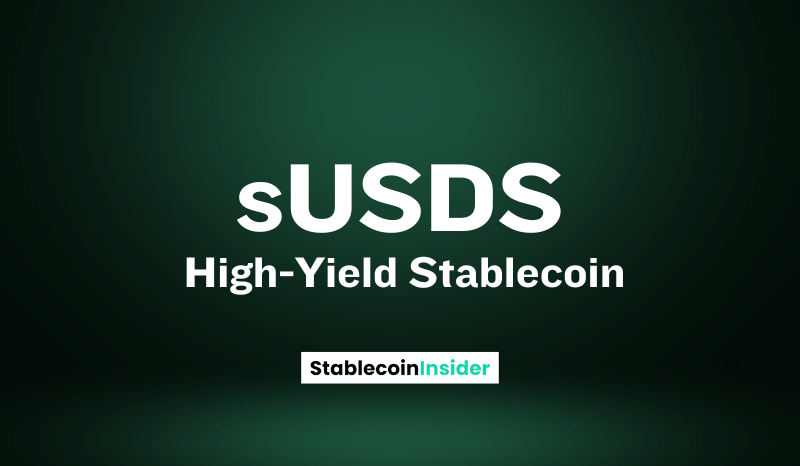Stablecoins have become foundational to decentralized finance (DeFi), providing the stability of fiat currencies with the programmability of blockchain assets.
As the DeFi space matures, yield-bearing stablecoins are gaining popularity, offering users a way to earn passive income without exposure to volatility.
Among the new generation of stablecoins is sUSDS, a high-yield version of the USDS stablecoin built by Sky, an evolution of the previous product known as sDAI.
This article provides a complete review of sUSDS, exploring how it works, its benefits, use cases, risks, and how it compares to other stablecoins.
Key Takeaways:
- sUSDS is a yield-bearing stablecoin issued by Sky, built on top of USDS.
- It offers a higher yield than sDAI through the Sky Savings Rate (SSR).
- Yield is generated from protocol fees and real-world asset investments.
- No lock-in periods and ERC-20 compatibility make sUSDS highly flexible.
- Potential use cases include savings, liquidity provision, and DAO treasury management.
What is sUSDS?
sUSDS is a yield-generating stablecoin created by Sky, designed as the successor to sDAI. While sDAI was based on DAI and earned through the DAI Savings Rate (DSR), sUSDS is based on USDS and earns yield via the Sky Savings Rate (SSR).
It aims to provide higher and more sustainable returns by tapping into both decentralized and traditional sources of yield, such as protocol fees and real-world asset investments.
Sky acts as the issuer and protocol manager, setting the savings rate and managing yield strategies. sUSDS is minted when users deposit USDS into the Sky protocol.
The deposited funds are deployed into interest-generating mechanisms, and the yield is reflected as an auto-compounding value increase in the sUSDS token.
How sUSDS Works
sUSDS operates under a mechanism similar to interest-bearing tokens. When you deposit USDSinto the Sky protocol, you receive sUSDS, which gradually increases in value relative to USDS as yield accumulates.
This yield is called the Sky Savings Rate (SSR) and is set by Sky Governance based on market conditions and risk appetite.
The SSR is funded by:
- Stability fees from lending
- Liquidation penalties
- Returns on real-world assets (RWAs) such as short-term U.S. government bonds
All of this is implemented through transparent, audited smart contracts. The protocol handles auto-compounding, so users simply hold sUSDS in their wallets to accrue yield over time.
Benefits of Using sUSDS
- Higher Passive Yield: The SSR typically offers higher returns than the DAI Savings Rate due to diversified sources of yield.
- No Lock-Up: Users can withdraw or convert sUSDS at any time, making it more flexible than fixed-term staking.
- DeFi Compatibility: sUSDS is ERC-20 compatible and can be integrated into lending, trading, and liquidity protocols.
- Real-World Asset Backing: Exposure to RWAs like bonds adds diversification and resilience.
- Transparent Governance: Sky Governance is community-driven and sets the SSR openly.
Potential Use Cases
- Passive Savings: Ideal for users looking to earn yield on stablecoins without actively managing DeFi positions.
- Liquidity Provision: Can be paired in LPs or AMMs for yield stacking.
- Collateral in Lending Protocols: Future plans suggest sUSDS could be used as collateral in platforms like Aave.
- DAO and Treasury Management: A more productive asset for DAOs looking to park idle stablecoins.
Risks and Considerations
- SSR Volatility: The rate can be changed by governance, affecting returns.
- Smart Contract Risk: As with all DeFi protocols, bugs or exploits in the contracts pose a risk.
- Adoption and Liquidity: As a newer asset, liquidity may be limited on some exchanges or protocols.
- Regulatory Risk: Increasing scrutiny of stablecoins and DeFi could affect protocol operations or compliance.
How to Get and Use sUSDS
- Buy USDS: USDS can be acquired via Sky or on supported decentralized exchanges like Uniswap.
- Deposit into Sky: Use the Sky dApp to deposit USDS and mint sUSDS.
- Hold or Deploy: You can passively earn by holding sUSDS or deploy it in DeFi strategies.
- Compatible Wallets: MetaMask and other Web3 wallets support sUSDS.
Comparison to Other Stablecoins
| Feature | sUSDS | sDAI | USDC | USDT |
|---|---|---|---|---|
| Yield | Yes (SSR) | Yes (DSR) | No | No |
| Backing | USDS, RWAs | DAI, crypto collateral | Fiat-backed | Fiat-backed |
| Governance | Sky DAO | MakerDAO | Circle | Tether Ltd. |
| Flexibility | High | Medium | High | High |
| Risk | Smart contract, rate changes | Smart contract | Centralized issuer | Centralized issuer |
sUSDS outperforms non-yielding stablecoins and even sDAI in many respects, particularly in terms of yield and integration with real-world assets.
Future Outlook
Sky has ambitious plans for sUSDS, including:
- Integration into major lending markets (e.g., Aave, Compound)
- Multi-chain expansion for wider adoption
- Governance enhancements to improve SSR setting mechanisms
- New DeFi products using sUSDS as a base layer asset
As the DeFi space continues to embrace RWAs and passive income solutions, sUSDS could play a pivotal role in creating a more resilient and rewarding stablecoin ecosystem.
Conclusion
sUSDS is a promising evolution in the stablecoin space, merging the stability of fiat with the yield potential of DeFi and RWAs. It offers higher returns than traditional stablecoins and is designed for both individual users and institutions looking to make their stablecoin holdings more productive.
While risks exist—like smart contract exposure and SSR variability—the product is backed by a reputable team and a forward-looking governance model.
If you’re exploring ways to earn passive income in DeFi while avoiding the volatility of crypto markets, sUSDS is worth your attention.
Follow the latest from Sky, test sUSDS with a small amount, and always assess your risk profile before making larger commitments.
Related:
Frequently Asked Questions (FAQ)
Q1: Can I lose money using sUSDS? While sUSDS is designed to preserve capital and grow through yield, risks include smart contract bugs, SSR rate drops, or extreme market events.
Q2: How often does the Sky Savings Rate (SSR) change? SSR changes are governed by Sky Governance and may occur in response to market conditions or community proposals. Changes are typically gradual and communicated in advance.
Q3: Is sUSDS audited? Yes, the Sky Protocol contracts have undergone audits. However, users should still be cautious and only invest what they can afford to lose.
Q4: Can I trade sUSDS on decentralized exchanges? Yes, sUSDS can be traded on platforms like Uniswap, subject to liquidity.
Q5: Is there a lock-up period for sUSDS? No. You can convert sUSDS back to USDS at any time.
Q6: How is sUSDS different from USDC or USDT? sUSDS generates yield automatically through SSR, while USDC and USDT are non-yielding stablecoins backed by fiat reserves.

